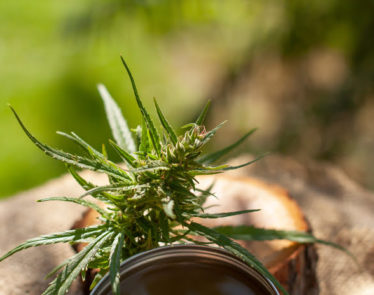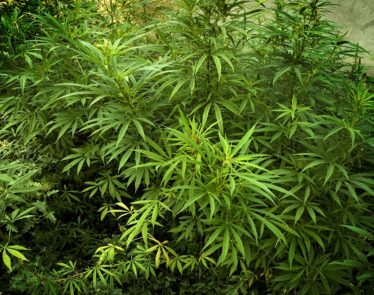
What is cannabis sativa? It's a good question, and it has a simple answer: it is a species of marijuana.
But if we want to delve a bit deeper to understand cannabis sativa in its entirety, then we should look at its differences to cannabis indica, its origins and growth needs, and its uses in today's cannabis industry.
Especially in the medical field, cannabis sativa is one of the most utilized species of this plant, so it's important to know as much as possible whether you are a user or investor.
So what is cannabis sativa? Let's find out!
What is Cannabis Sativa?

Importantly, there are actually three main species of cannabis, though most of us only recognize two. They are cannabis sativa, cannabis indica, and cannabis ruderalis.
There is an ongoing debate over whether these are three unique species or three sub-species of one cannabis gene. The answer is still being argued about!
However, that argument won't really affect you for the most part. But what will affect you are the unique characteristics and effects of each of these species. It is important to distinguish one from the other in terms of chemical makeup, visuals, and medical effects, so let's take a look.
Cannabis Sativa: The First of the Two Most Popular Cannabis Species
Cannabis sativa:
- Thrives in hot climates with long daylight hours and lots of sunshine—think Colombia, Mexico, and Thailand;
- Typically grows to between 8 and 12 feet, though some can reach 20 feet;
- Is a tall and thin, tree-like plant with long and thin narrow leaves;
- Takes longer to mature but can generate huge yields.
Cannabis Indica: The Second of the Two Most Popular Cannabis Species
Cannabis indica:
- Originates in the Middle East and can grow in turbulent climates;
- Is shorter than cannabis sativa, roughly 3-4 feet tall, densely branched with broader and wider leaves;
- Has a much darker green color, due to a higher concentration of chlorophyll;
- Produces a protective resin that is very dense in cannabinoids. As such, indica strains tend to be the most potent.
Cannabis Ruderalis: The Least Known and Used Cannabis Species
Cannabis ruderalis:
- Originates in Russia;
- Grows no higher than 2 feet tall;
- Has a wild, bushy appearance;
- Contains very little to no THC—the psychoactive component found in cannabis. As such, it is never used for medical purposes and rarely for recreational.
As the industry concentrates its efforts on the two specific species of indica and sativa, so will we from here on.
Cannabis Sativa vs Indica Buds
Sativa Buds
Sativa buds have characteristics like the plant—they are described as whispy and loose-looking and are lengthier than indica buds. Likening to a collection of wispy hairs, sativa buds are airy and physically lighter in weight than indica buds. When sativa buds bloom, the flowers grow down along the branch, and the buds can adopt a deep red or orange hue as they grow in much warmer climates.
Indica Buds
By contrast, indica buds are shorter and more compact than sativa buds. They are tight and dense and look and feel firmer to the touch. Indica buds may have a purple tinge to them since they are native to cooler climates. Usually if you see purple on a bud, it is an indication of an indica, however, sometimes sativa buds, if grown in cooler climates, can develop purple coloration as well.
Medical Effects of Cannabis Sativa and Cannabis Indica
The uses of cannabis sativa in the medical field come down to the effects it has on the human body after consumption. In fact, it is the cannabinoids within the plant that makes it a medicine. The cannabis plant produces over 100 cannabinoids, and it is these that have various effects on the body when consumed.
This is because our body has a natural endocannabinoid system that reacts with the two most important cannabinoids in the plant, THC and CBD.
Our endocannabinoid system is, effectively, a series of receptors found all around our body, and it produces a substance that affects pain and inflammation, as well as other processes in your body.
The THC and the CBD both react with our endocannabinoid system but in different ways, and cause different results.
THC

Also called Delta-9 tetrahydrocannabinol (or just tetrahydrocannabinol), THC is the psychoactive component in cannabis that gives the 'high.' It is also an appetite stimulant and reportedly helps with nausea and vomiting.
CBD
Also called cannabidiol, CBD has little to no psychoactive effect and can actually make the ‘high’ caused by THC more tolerable. It eases inflammation and pain and is a powerful relaxant. CBD use is prolific in easing symptoms of conditions such as epilepsy, as it encourages relaxation that helps to counteract the brain's over-stimulation.
Both indica and sativa cannabis strains contain THC, CBD, and other cannabinoids.
Using Cannabis Sativa Recreationally
Cannabis Sativa
The effects of cannabis sativa differ greatly from those of indica. Sativa's effects are often considered ideal for those looking for creativity, energy, and mental focus. Typically they have energetic and uplifting effects.

For those looking to be more productive and functional, or to counteract fatigue, sativa could be for you.
According to greenrelief.ca:
"Other reported effects of sativas include laughter and better ability to carry on a conversation. Given that they can help with creativity, cannabis sativa is very popular among philosophers, artists and musicians. Some sativas even have been found to enhance lights and sounds, making music, movies, and your surroundings more vibrant."
Cannabis Indica
On the other hand, indica strains are very relaxing with sedative effects on the body. As a result, indicas are best used at night time and can help those in need of sleep or suffering from insomnia.
Indicas are so relaxing, that they are said to heighten your senses more. This is also known as the 'high' feeling and users can feel more affected by music, tastes, and touch. Indicas can be so relaxing that muscles and limbs can de-stress and the entire physical body is loosened up.
Cannabis Sativa: The Takeaway
So what is cannabis sativa? Well, in short, it is a species of marijuana that offers the user an uplifting experience and has a multitude of medical benefits. Of course, now that you've read this article you know there's more budding under its leaves!
Happy sativa-ing!
Featured Image: Depositphotos/© albertyurolaits












